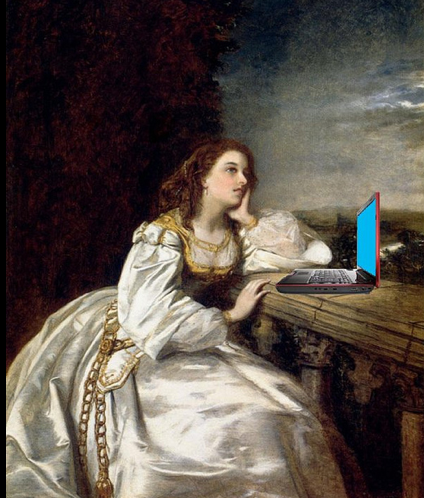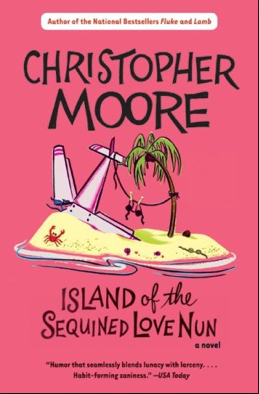Using Backstory Effectively
All righty. So we have been discussing “flashbacks” and I have been working hard to pull this blanket term apart because not everything that shifts back in time is the dreaded “training wheel flashback” that make us editors break out in hives. New writers love to shift back and forth in time because they are weak at plotting and characterization and “flashbacks” often serve to prop up these weak spots.
Um, like training wheels.
Before we get into non-linear plotting, I would like to talk about backstory. Often we feel the need to include a lot of backstory right in the beginning because we just simply don’t trust that the reader will “get it.” Sometimes this will be delivered through going back in time so we need to talk about it.
Our goal in fiction is to hook early and hook deep. GUT HOOK. Get as close to the inciting incident as possible. Yes, backstory has its place, but we must be careful about how we deliver it. Think of garlic mashed potatoes. I LOVE them. But what happens if the garlic isn’t blended in just right? No one wants a mouthful of garlic. It is an unpleasant experience that probably discourages taking another bite.
There is nothing per se wrong with backstory in the beginning, but we live in an age where attention spans are very short. The longer we take to get to the point, the likelier it is that a reader will lose interest.
New writers particularly believe that readers need more setup than they really do. They don’t trust the reader. But not only are readers actually very clever, giving that backstory often will fizzle the very tension that turns pages.
I have made up two examples to illustrate what I am talking about. I’m going to show not tell ;). This first selection is not necessarily “bad” writing. But I would like you to contrast it with the second sample and see the difference it makes when we learn to be “secret-keepers” and save that backstory for later.
Kristen’s Made-Up Example A:
Fifi’s mom had been abusive all her life. She remembered staring through the bars of the toddler bed, tensing at the sound of footsteps in the hall knowing, even at that young of an age, that pain would follow. For years, the whole family balanced on eggshells, waiting to sense what to say or what to do that might delay Doris’s wrath. Fifi never could figure out just how to please her mother.
When she was in third grade, she had to explain the bruises on her back from the Play-Doh cans lobbed at her that morning, the cans she forgot to pick up after Elizabeth came over to play. Then, when she was in sixth grade, there was that teacher who called CPS when Fifi showed up with a black eye. But her mom was always the charmer and was practically best friends with the social worker by the time the interview was finished. CPS did nothing and Fifi got the beating of her life as soon as the social worker was out of the drive. But that time her Mom made sure to only hit places where no one could see the marks.
Now Fifi was thirty and somehow had never escaped the pull of her Doris’s power. The power of Alzheimer’s. It figured her mother would be blessed with forgetting, when that was all Fifi had ever wanted. Just tonight, her mother had set the kitchen on fire and when Fifi tried to extinguish the flames, her mother had pummeled her. She snapped. After all this time, all this pain, she just picked up a pot and fought back and this time it had gone terribly wrong.
Example B:
Fifi pressed a scorched towel to her face to stem the bleeding. Her mother, Doris, lay facedown in a broken heap, her head an odd shape from where the pot had cracked her skull. After all the years, all the beatings it had come to this. It figured the one time Fifi stood up for herself, it would end with trying to hide Doris’s body.
***
There is nothing particularly wrong with Example A. But, I do run the risk of sounding melodramatic and the reader wonders if I have a point to all this and might lose interest before Fifi whollops mom with a pot. The first example does a lot of explaining and answers a lot of questions. We are told about the long history of abuse with all this setup and so we feel comfortable in the situation because we are grounded.
Now, Example B does something vastly different. It starts right at the trouble and poses more questions than it answers. Because of this, I compel the reader to move forward because the reader is NOT grounded.
In the second example, we wonder what the heck happened? We glean there was some kind of a fire because of the scorched towel. We also “get” there was some kind of an altercation because Fifi is bleeding. I don’t need to detail the history of abuse because a few words take care of this. After all the years, all the beatings.
I don’t need to detail Fifi being a doormat, because it is clear this is the first time she has fought back. But notice the hidden questions. Not only do we want to know what the heck happened, we also get a sense that Fifi has never had anyone believe her because her instinct is NOT to call the police, rather it is to dispose of her mother’s body.
We are compelled to sympathize with Fifi because it is clear she is a victim and not simply a murderer. We know there is a history of suffering because of the language. Mom is referred to as Doris (not “Mom”), suggesting psychological distancing.
Backstory has its place, but often we are tempted to glom it on in the beginning to make the reader “comfortable.” Making readers comfortable is bad. Make them uncomfortable because that means they will want to turn pages.
Let’s say our story continues on. Fifi is trying to think of how to hide her mother’s body, but remember there was a kitchen fire. What if a neighbor has called 911? Fifi is pondering the rug in the living room and wondering if she can lift Dear Old Mom into the trunk of her Honda on her own, when firetrucks arrive. Now, I have a bad situation I have made worse.
Effectively, the reader is hooked.

Image via Flickr Creative Commons, courtesy of Mike Licht
I can go any number of ways with this, but let’s say the firemen come in, find the body and Fifi is hauled away. It is later that I could go into maybe a more detailed description of the years of abuse. Say, in an interview with a homicide detective.
Or maybe she stuffs mom into a closet, no one is the wiser and Fifi calls a shady guy from her past to help get rid of mom. She will have some explaining to do to get Shady Guy’s help. Backstory can be relayed, but notice this is done later after the reader is vested.
Backstory as a Time-Loop
So this is our simple example. But what if I want to put Fifi into some situation that no one would have anticipated? What if the story problem is not about getting away with murdering her mother and is about something else?
What if the murder is simply what led to the actual plot problem?
For instance, Fifi is in Venezuela awaiting to hear from the American Embassy to help her get out of jail. She was caught running drugs.
This is when we can use backstory in a sort of time-loop. We start with the inciting incident to get the reader hooked and then smoothly loop around. We go back to when everything went sideways until we catch up to real-time.
If the book is really about Fifi bringing down drug lords who framed her, then we start with her in a Venezuelan prison (inciting incident) then smoothly transition back to the murder and how it began a series of events that now brings us up to real-time story and the problem of taking down the people who framed her. We have a surface problem (get out of jail and take down drug lords) as well as a story-worthy problem (learning not to be a victim).
For instance, Fifi killed mom and asked Shady Guy for help getting rid of the body and this decision led to her being framed for running cocaine. Now she is in a real pickle, but note that we needed the loop around of backstory to properly get to the real-time problem. We also do NOT go back in time until the reader is hooked with the inciting incident for the real-time plot problem. If we dump backstory too soon? The tension evaporates.
Les Edgerton uses a fabulous example to illustrate this technique and I am going to include it here because, yes, I have read this novel and it is the best example I can think of so I am stealing :D . Les said it was okay. His book Hooked will change your life.
Christopher Moore’s Island of the Sequined Love Nun does such a loop-around. The story begins with Tucker Case hanging upside down from a coconut tree about to be eaten by cannibals. Without so much as a space break, Moore shifts seamlessly from Tucker awaiting being made into an entree back in time with the line, “Like most missteps he had taken in life, it had started in a bar.”
We effortlessly go back to the bar where Tucker meets the prostitute who talks him into taking her up in a plane so she can join the Mile High Club (even though he is drunk and shouldn’t be flying). Tucker ends up crashing the plane and seriously damaging his man parts. To make matters worse, he was the pilot for a cosmetics company that has a pink plane ;) …and the owner is livid over the avalanche of disastrous PR.
Tucker not only is losing his license, he is probably going to go to jail and this leads him to taking a somewhat shady job flying medical supplies in Micronesia. This backstory is how he ended up suspended in the tree about to be eaten and it is necessary because the story is about Tucker growing up and realizing that it isn’t bad luck or karma that is making his life suck, it’s that he makes bad decisions.
But remember, we began this story with Tucker hanging in a tree about to be eaten. The inciting incident has already occurred, so readers will indulge this loop around because they want to know how Tucker gets out of the tree and what happens from there.
If the story had simply been about Tucker trying to rebuild his life after the world’s most embarrassing plane crash, we would start in the bar. But even then, if we simply start in the bar, we are not at an inciting incident—Tucker doesn’t realize he might be responsible for his own misfortunes until that defining moment in the tree.
We know he has reached this self-awareness because of the line, “Like most missteps he had taken in life, it had started in a bar.”
If we simply start in the bar and Tucker lacks this self-awareness, the flight, the crash, the injury, the threat of jail just becomes a string of bad event after bad event happening to this character.
Ask the Hard Questions
When you are tempted to include backstory (particularly at the beginning) just ask the hard questions.
Is it necessary to give backstory at all?
In Thelma and Louise we never get Louise’s full story. We (the audience) are left to fill in the blanks and infer Louise was likely raped in Texas.
Can I just add a small amount of backstory for set-up?
For instance, in our Fifi B example, there is a tad bit of setup that Fifi was abused by her mom.
Does this story, by nature, require a loop-around? Without the loop back in time, is the story we want to tell completely altered?
Look at Island of the Sequined Love Nun.
No matter which path we choose, backstory IS vital. Callie Khouri had to know Louise’s backstory to write Thelma & Louise but she was not required to spell it out. We (Author God) need to know our characters, but how we then spell it out depends a lot on the story we wish to write.
What are your thoughts? Questions? Concerns? Is it becoming clearer how to use going back in time as a literary device? Do you see where it behooves us to be secret-keepers?
I LOVE hearing from you!
To prove it and show my love, for the month of JUNE, everyone who leaves a comment I will put your name in a hat. If you comment and link back to my blog on your blog, you get your name in the hat twice. What do you win? The unvarnished truth from yours truly. I will pick a winner once a month and it will be a critique of the first 20 pages of your novel, or your query letter, or your synopsis (5 pages or less).
Classes COMING SOON:
Before we go, y’all asked for it so here goes. I have two classes coming up. The class on log-lines Your Story in a Sentence—Crafting Your Log-Line is $35 and as a BONUS, the first ten sign-ups get to be victims. IF YOU ARE QUERYING AN AGENT, YOU NEED A PITCH. I will pull apart and torture your log-line until it is agent-ready for FREE.
Beyond the first ten folks? We will work out something super affordable as a bonus for being in the class so don’t fret. I’ll take good care of you. AND, it is two hours and on a Saturday (June 27th) and recorded so no excuses :P .
I am also running Hooking the Reader–Your First Five Pages. Class is on June 30th so let’s make Tuesdays interesting. General Admission is $40 and Gold Level is $55 but with Gold Level, you get the class, the recording and I look at your first five and give detailed edit.
Our first five pages are essential for trying to attract an agent or even selling BOOKS. Readers give us a page…maybe five. Can we hook them enough to part with cold hard CASH? Also, I can generally tell all bad habits in 5 pages so probably can save you a ton in content edit.
For those who need help building a platform and keeping it SIMPLE, pick up a copy of my latest social media/branding book Rise of the Machines—Human Authors in a Digital World on AMAZON, iBooks, or Nook.








